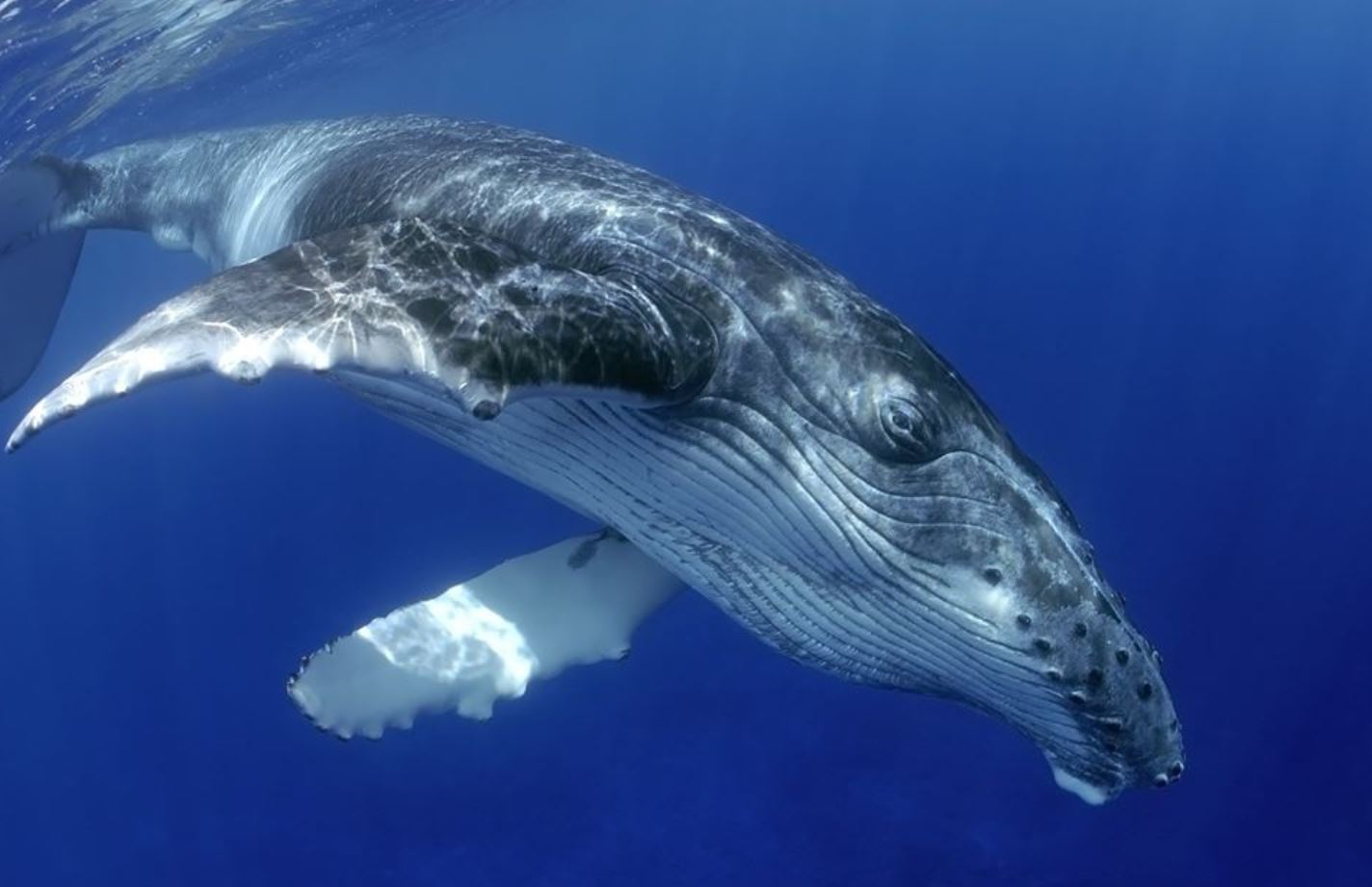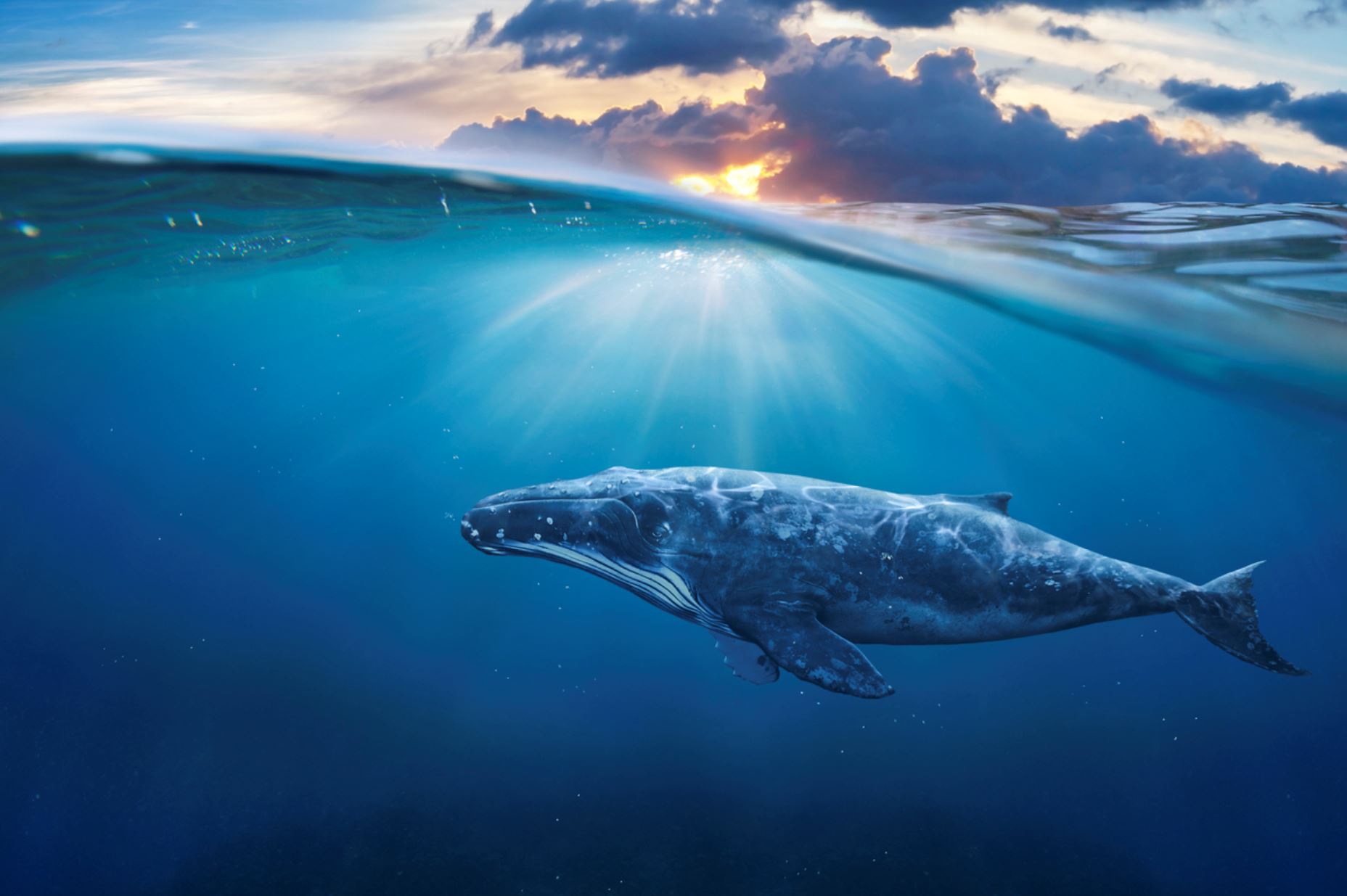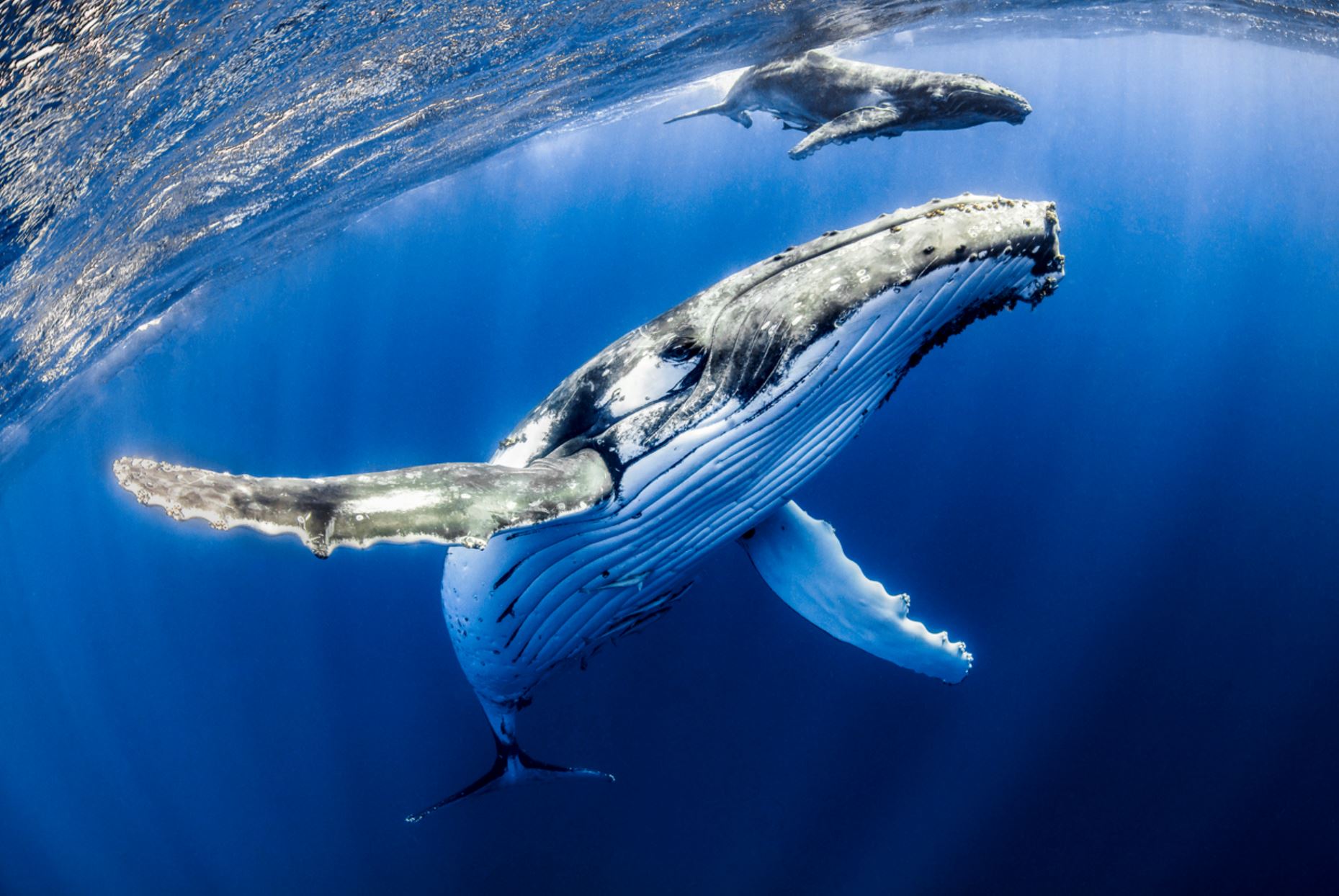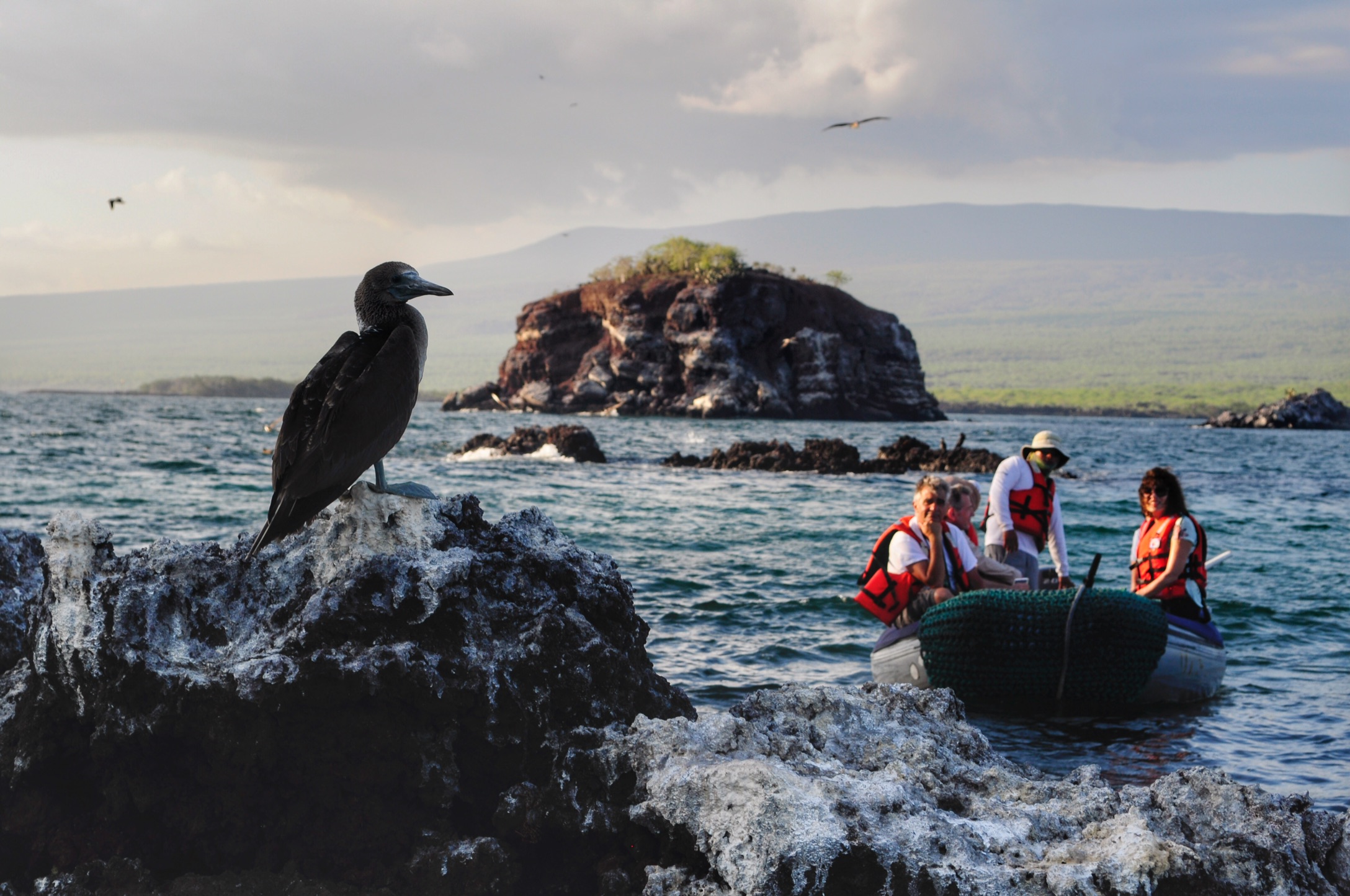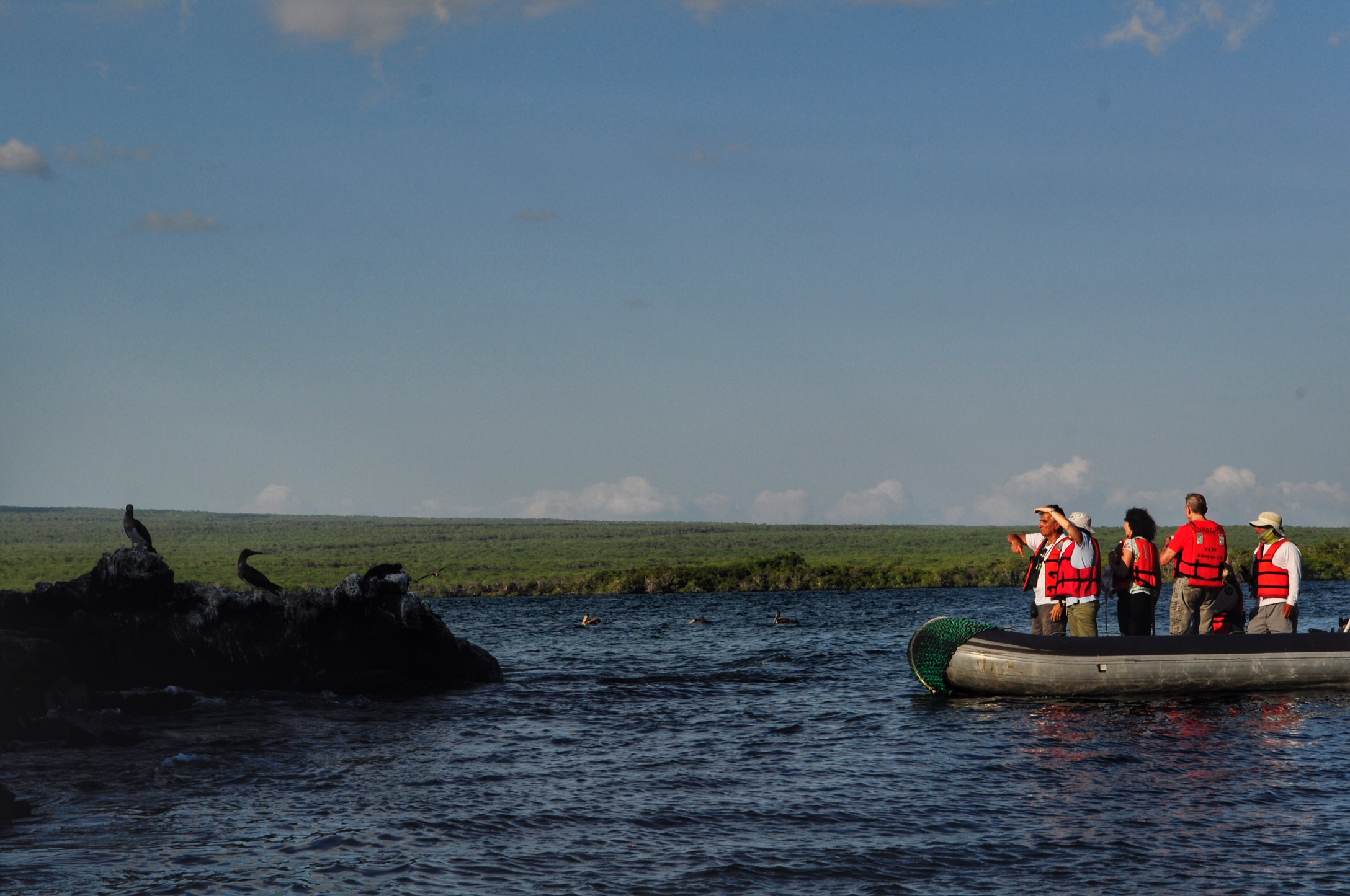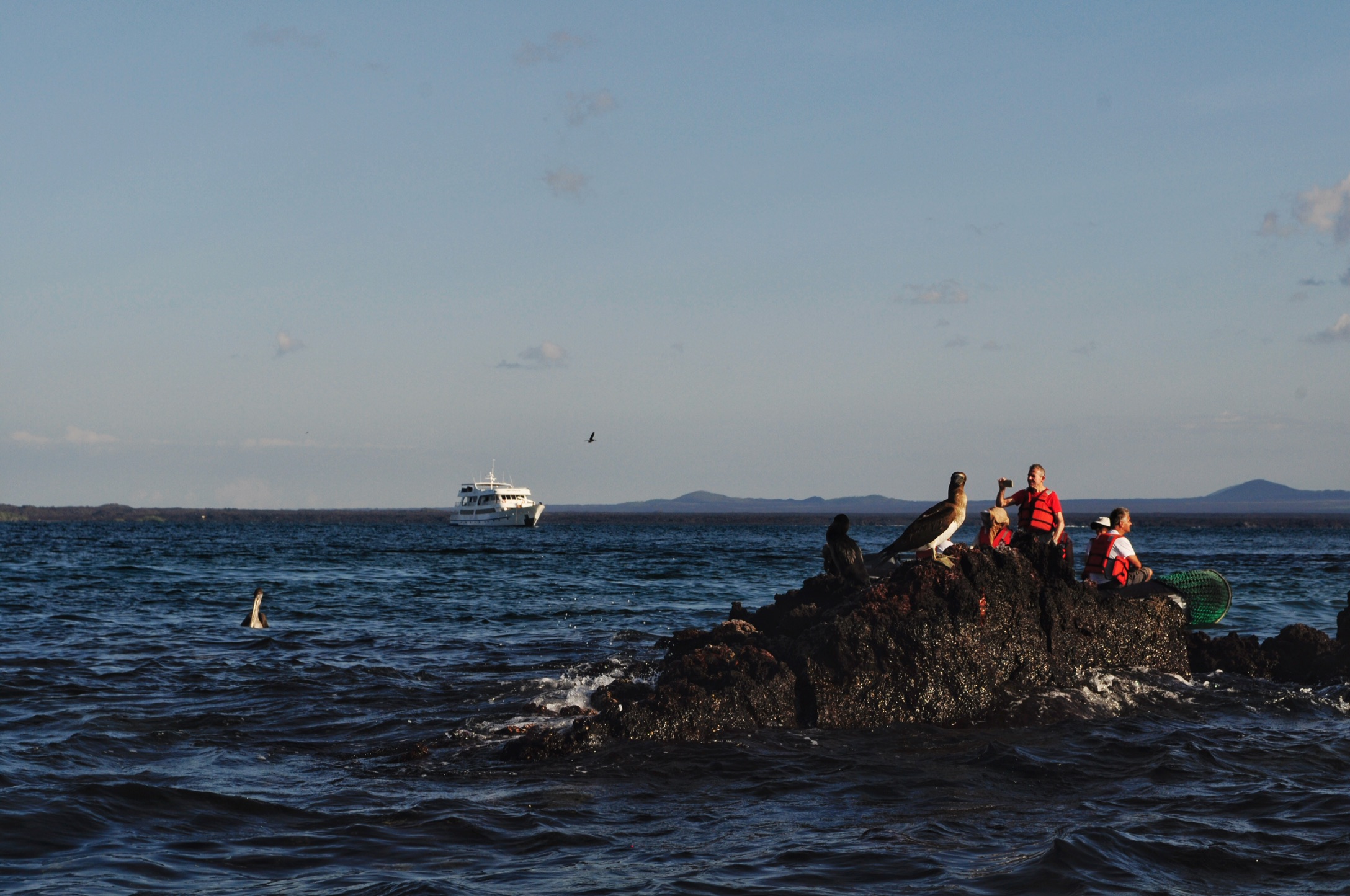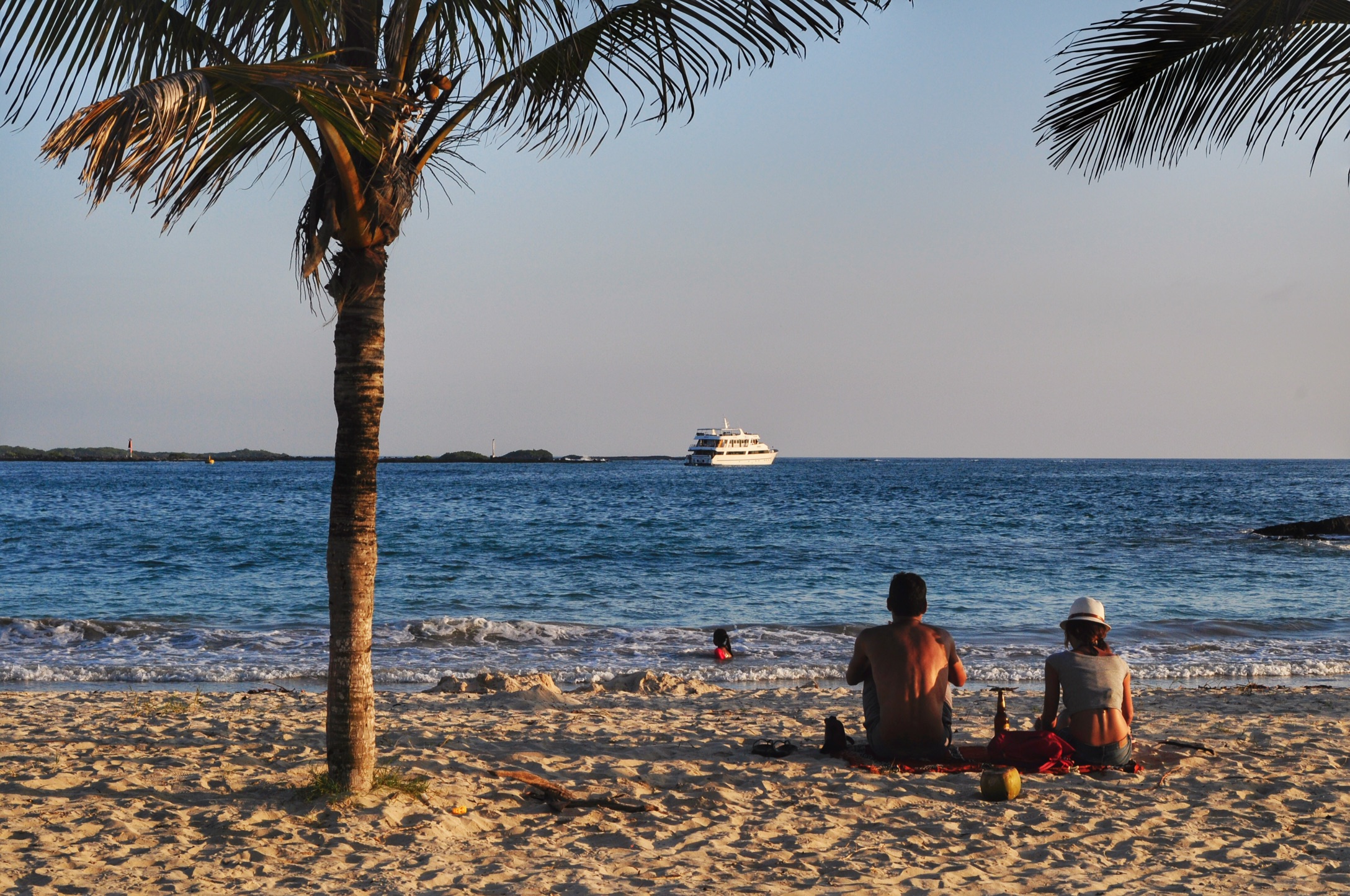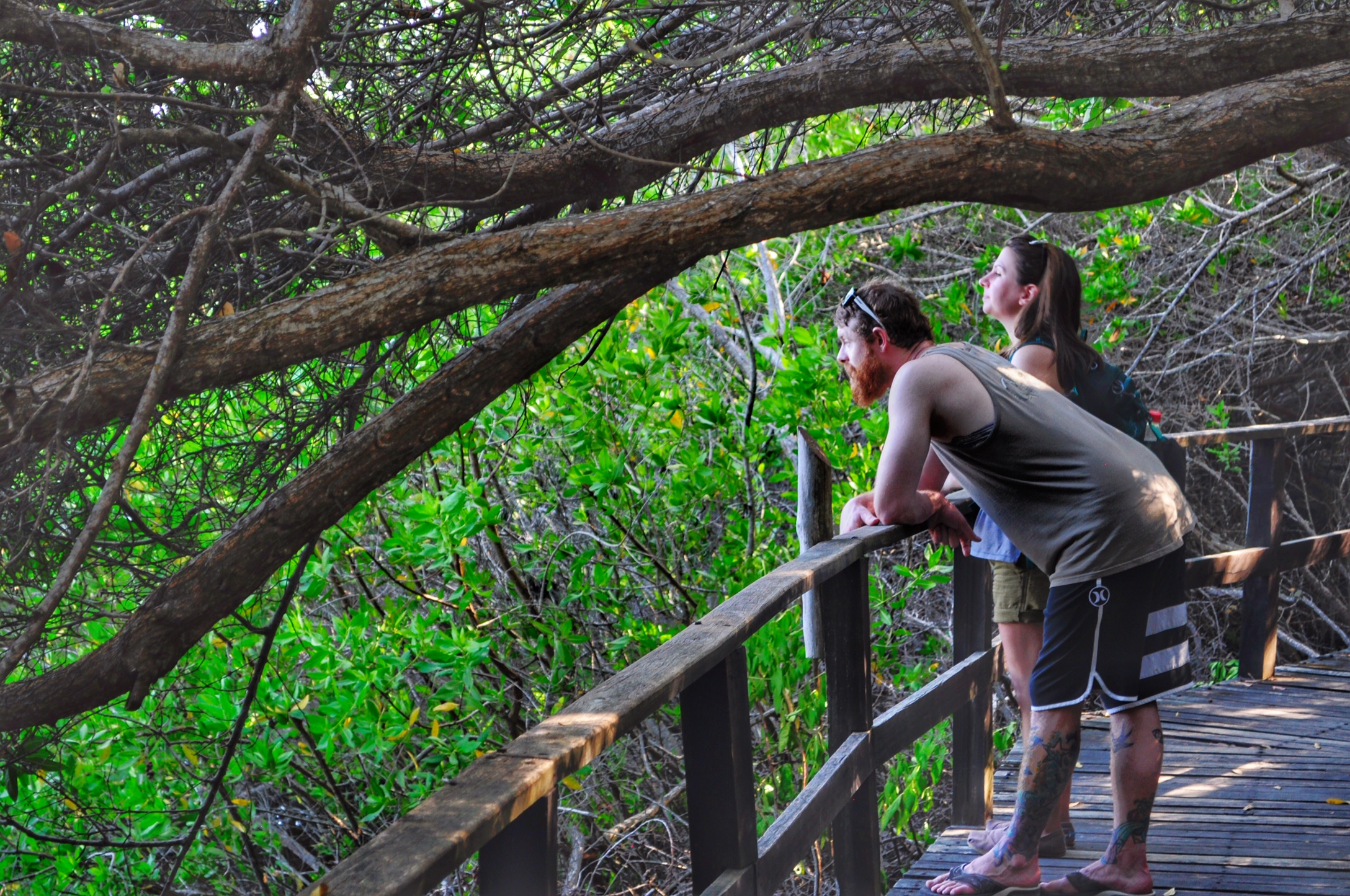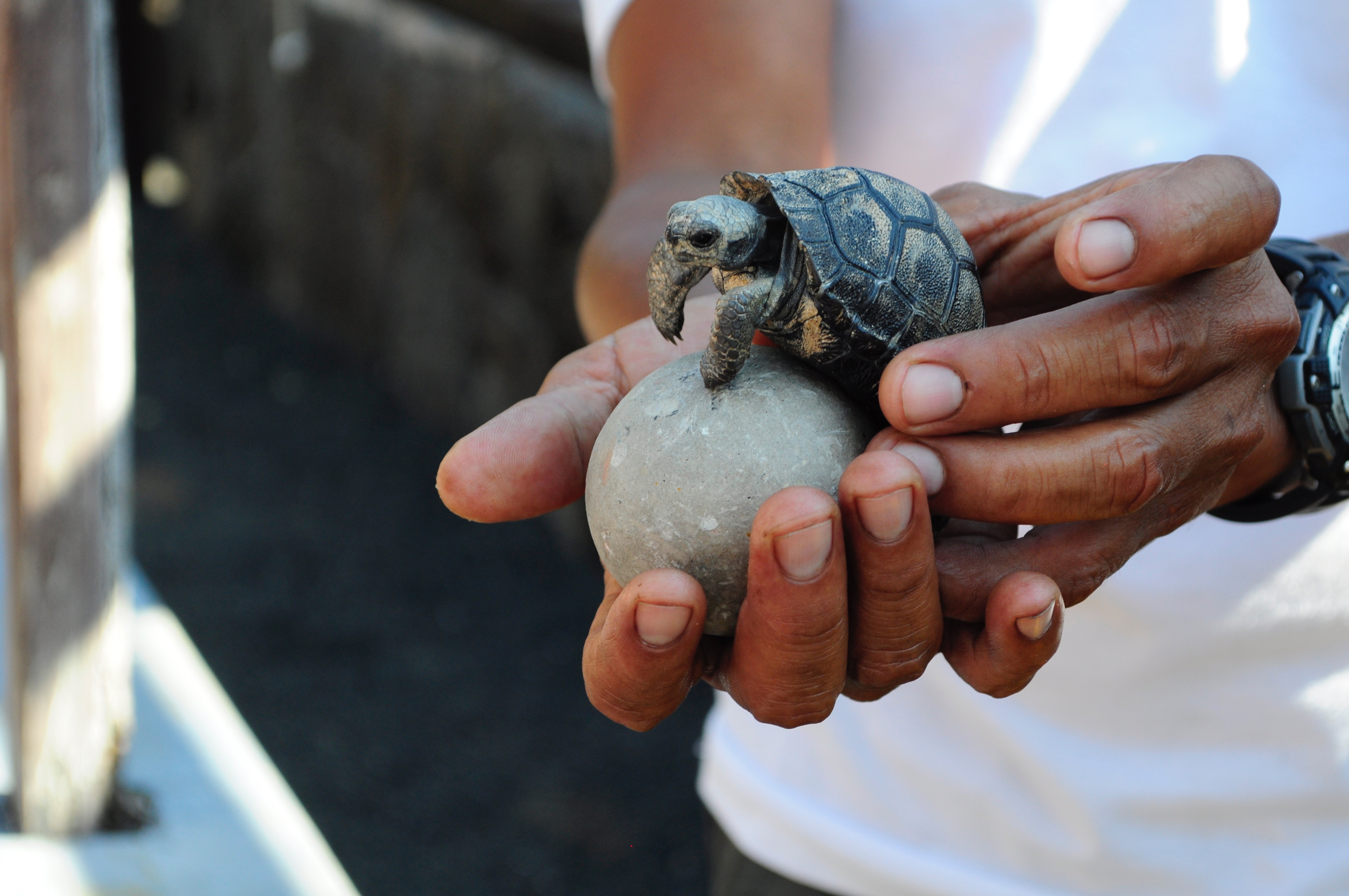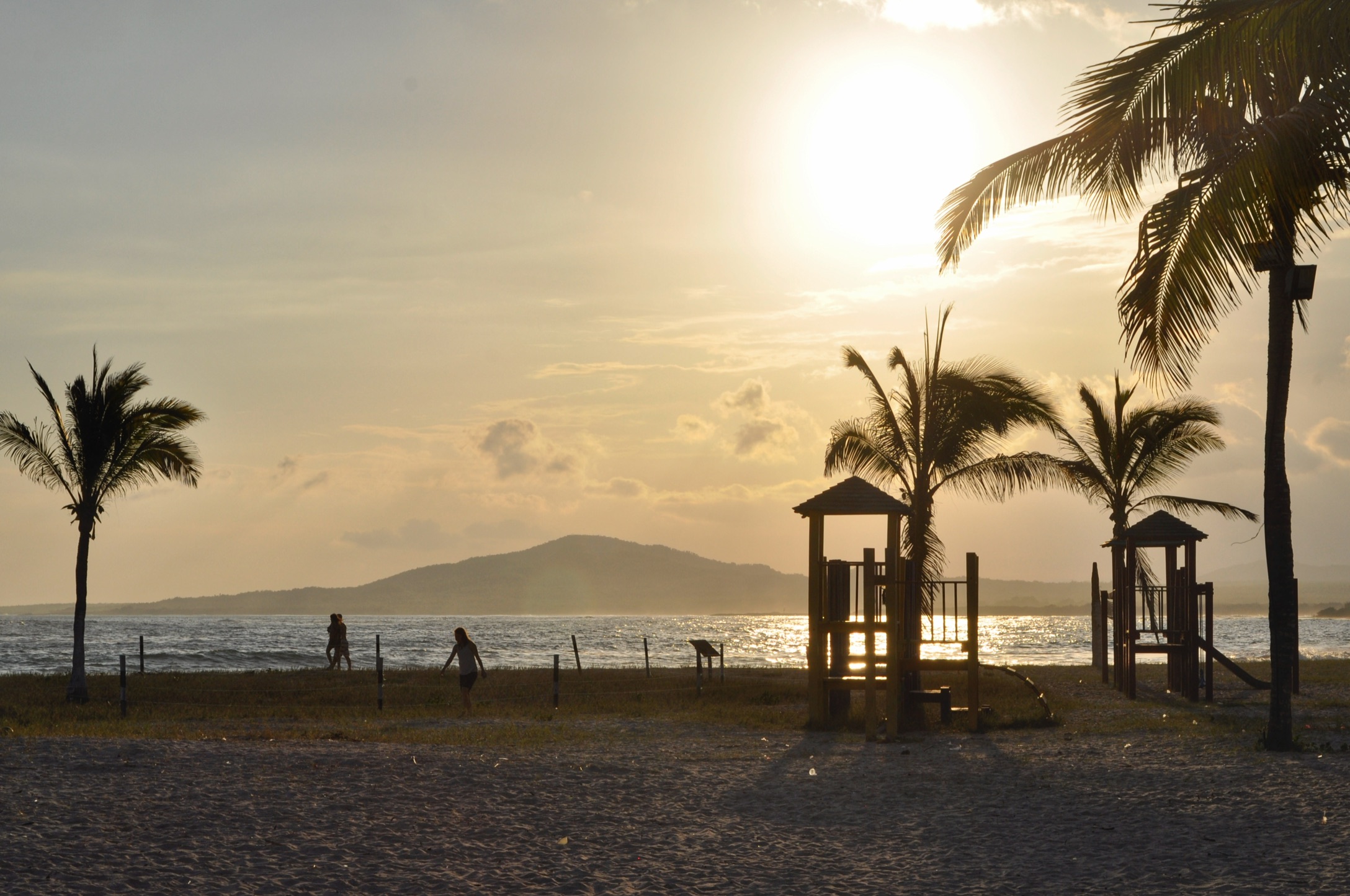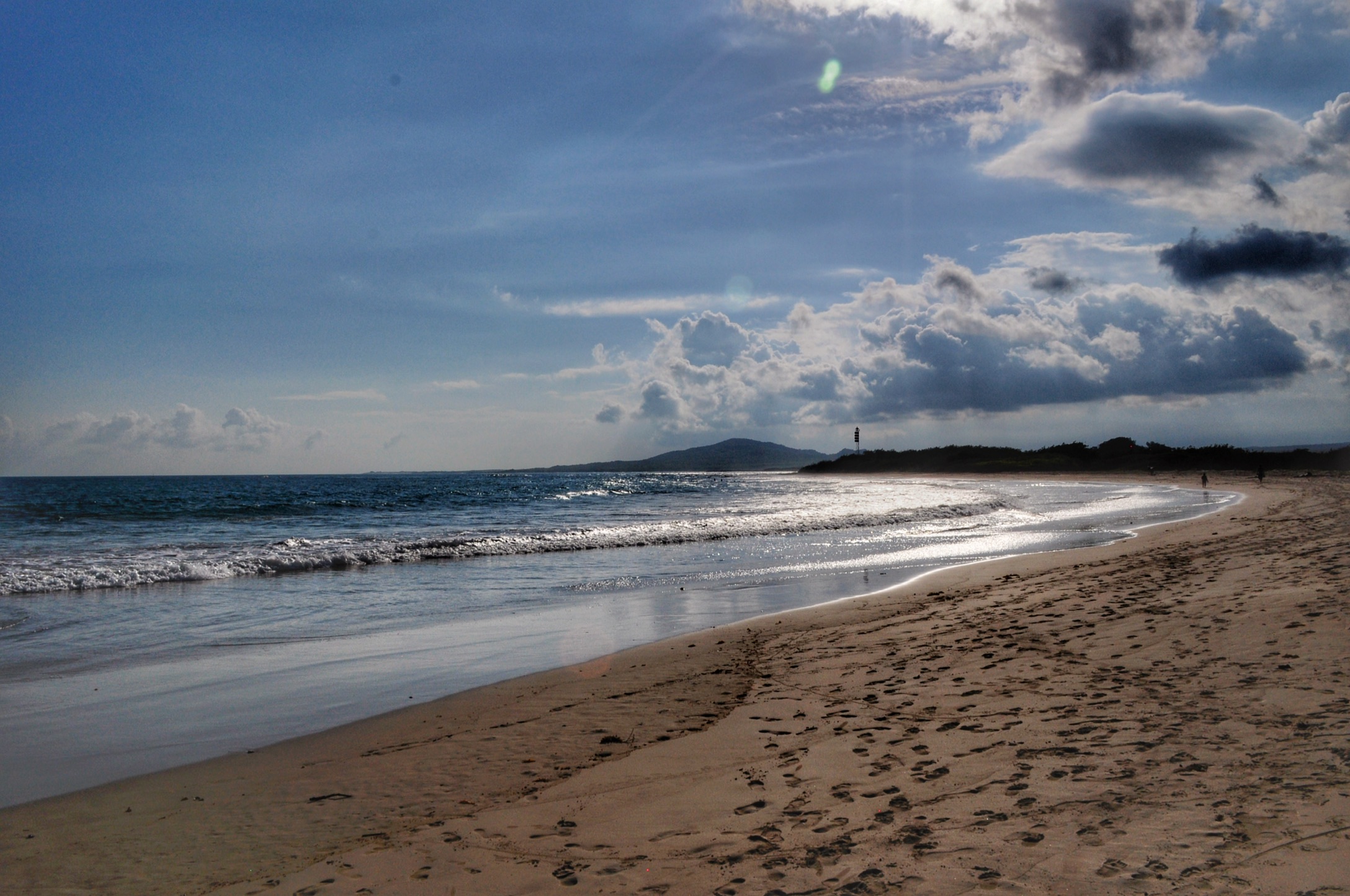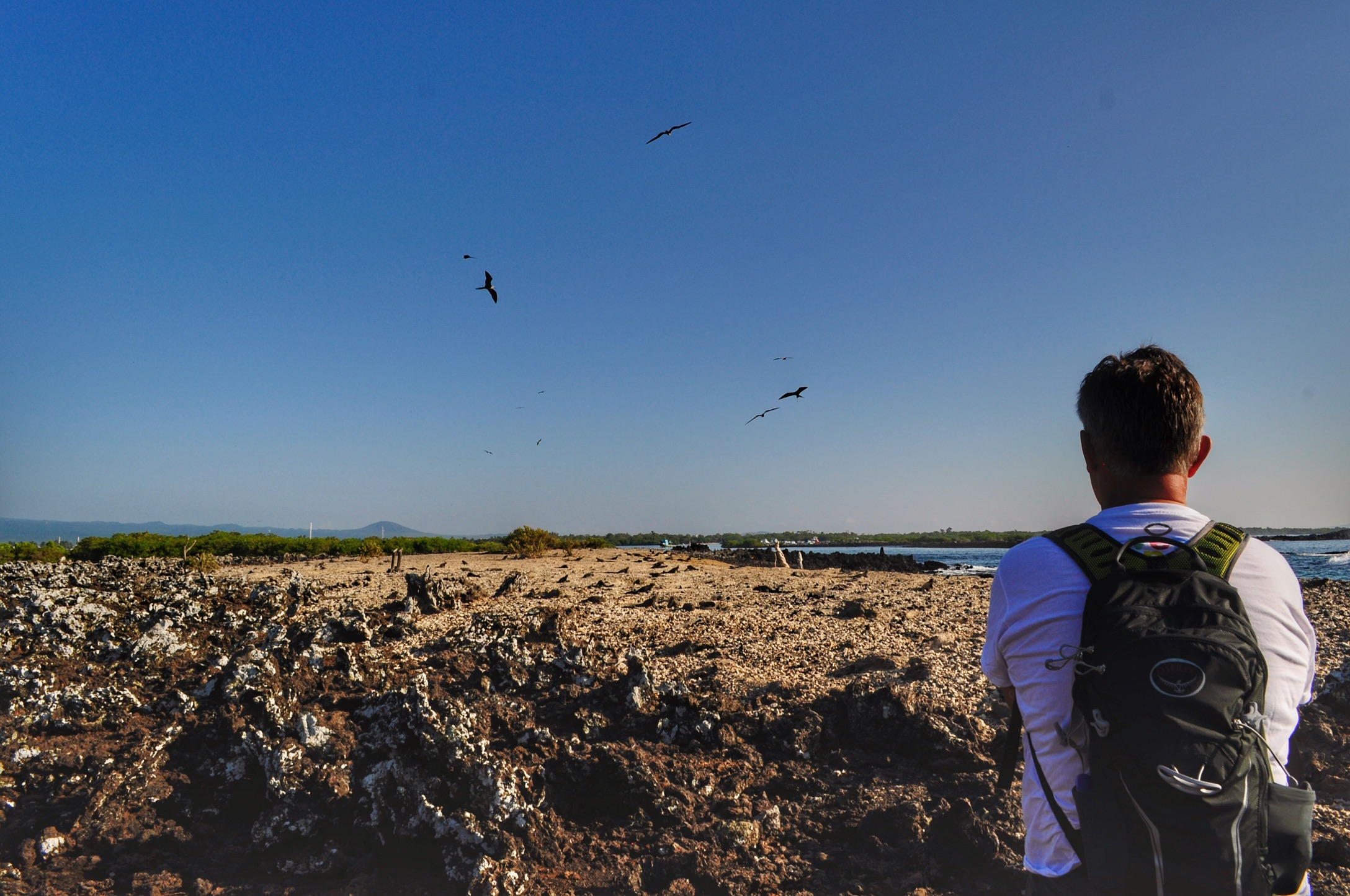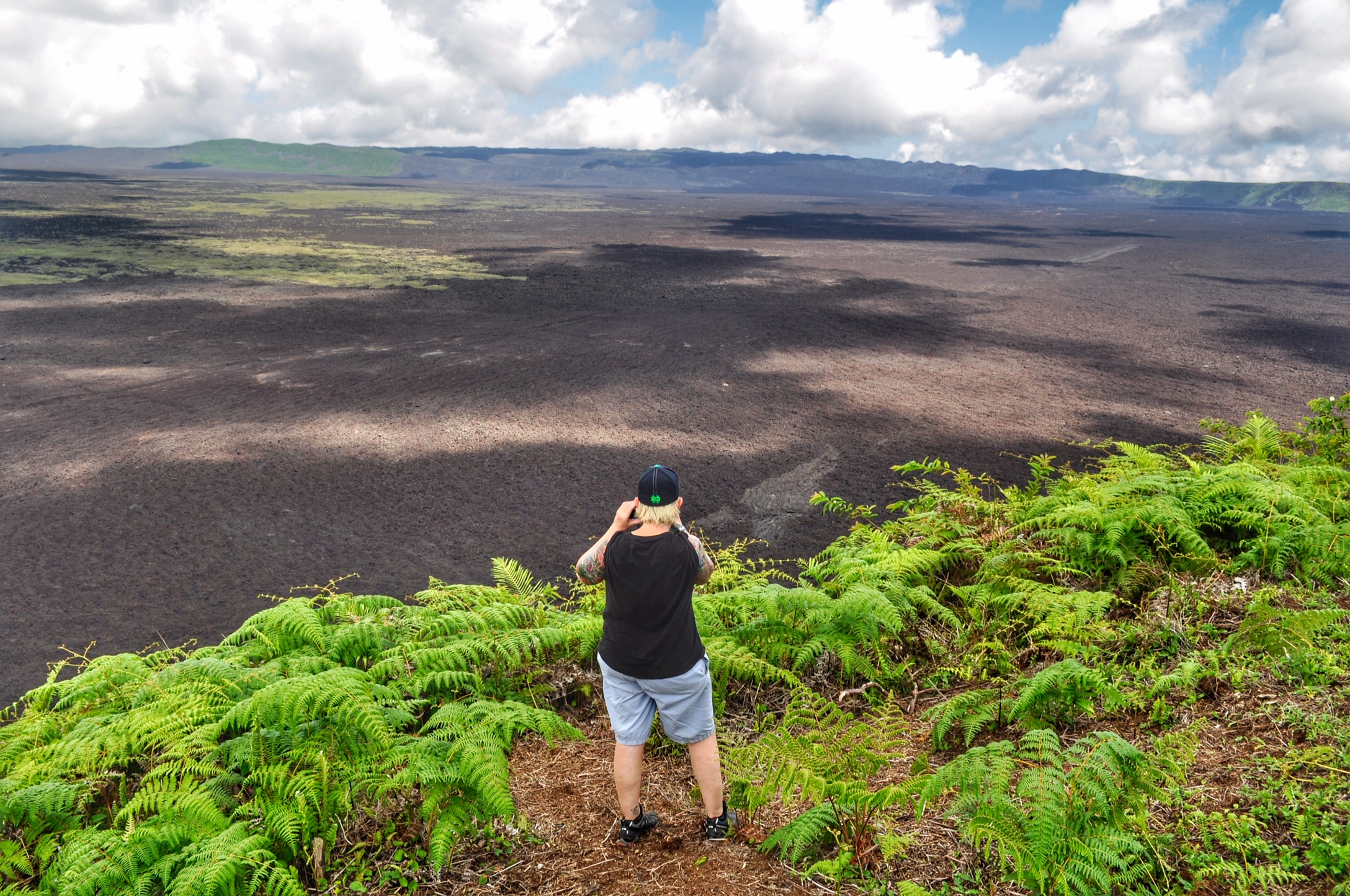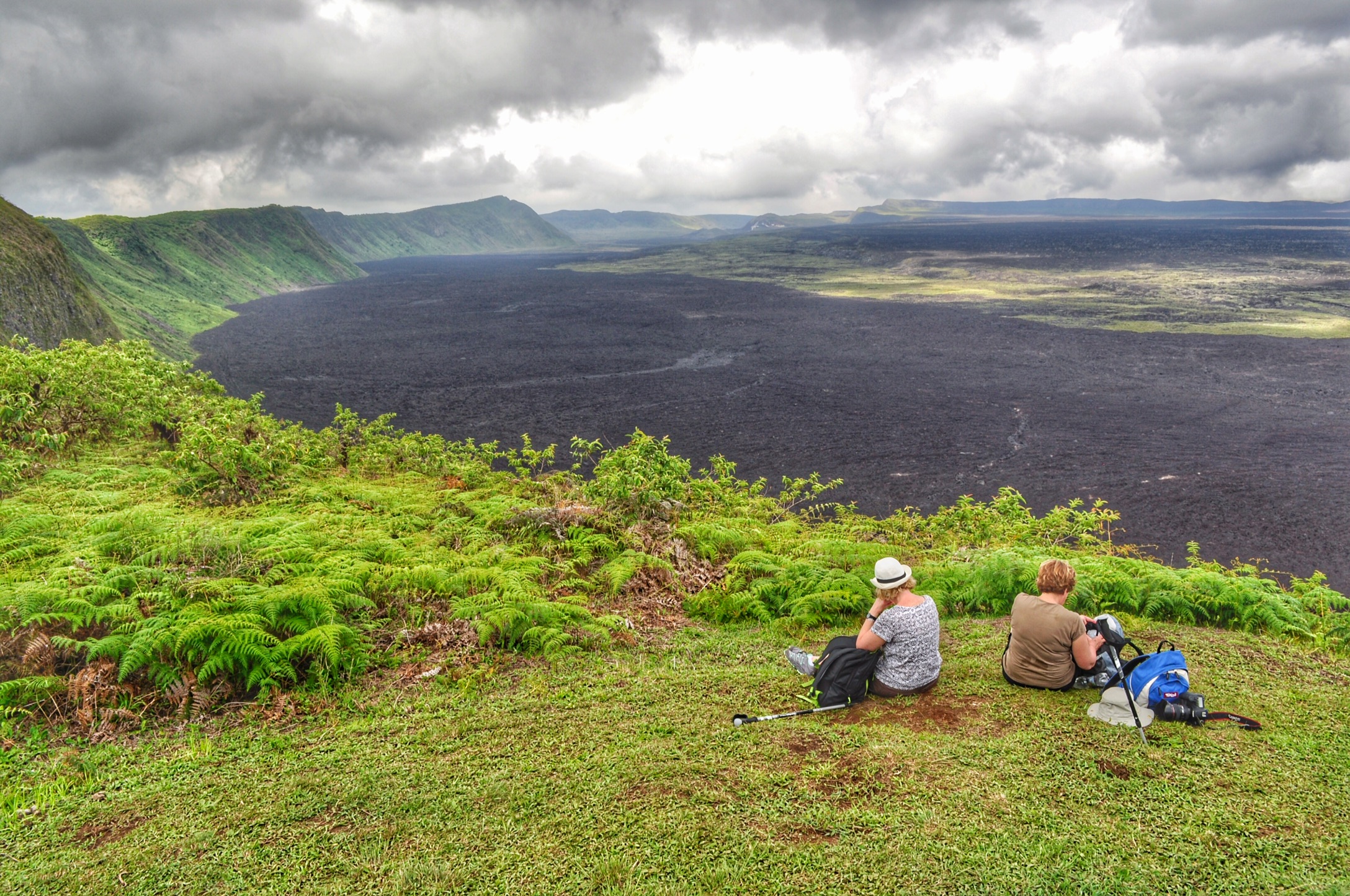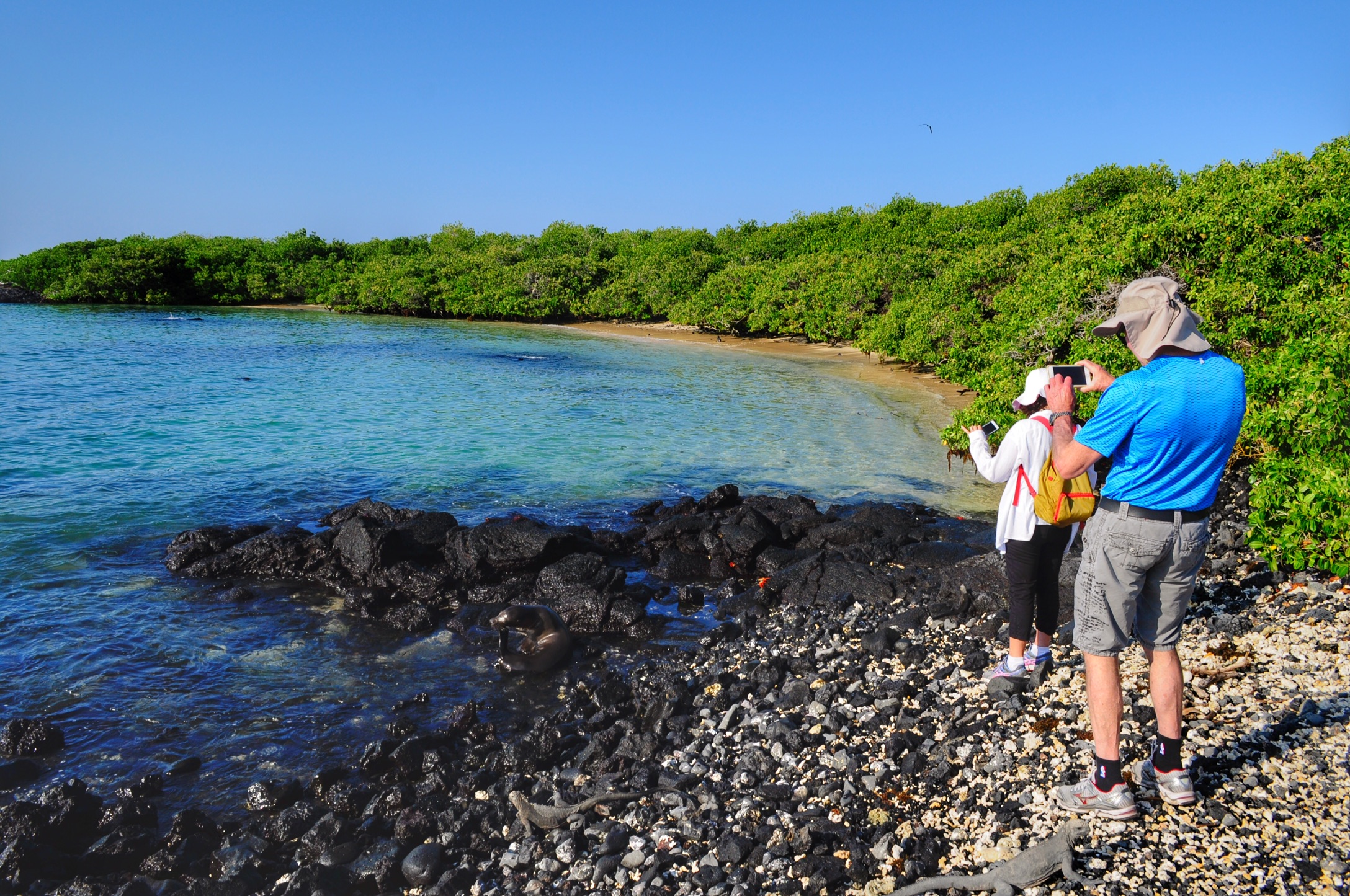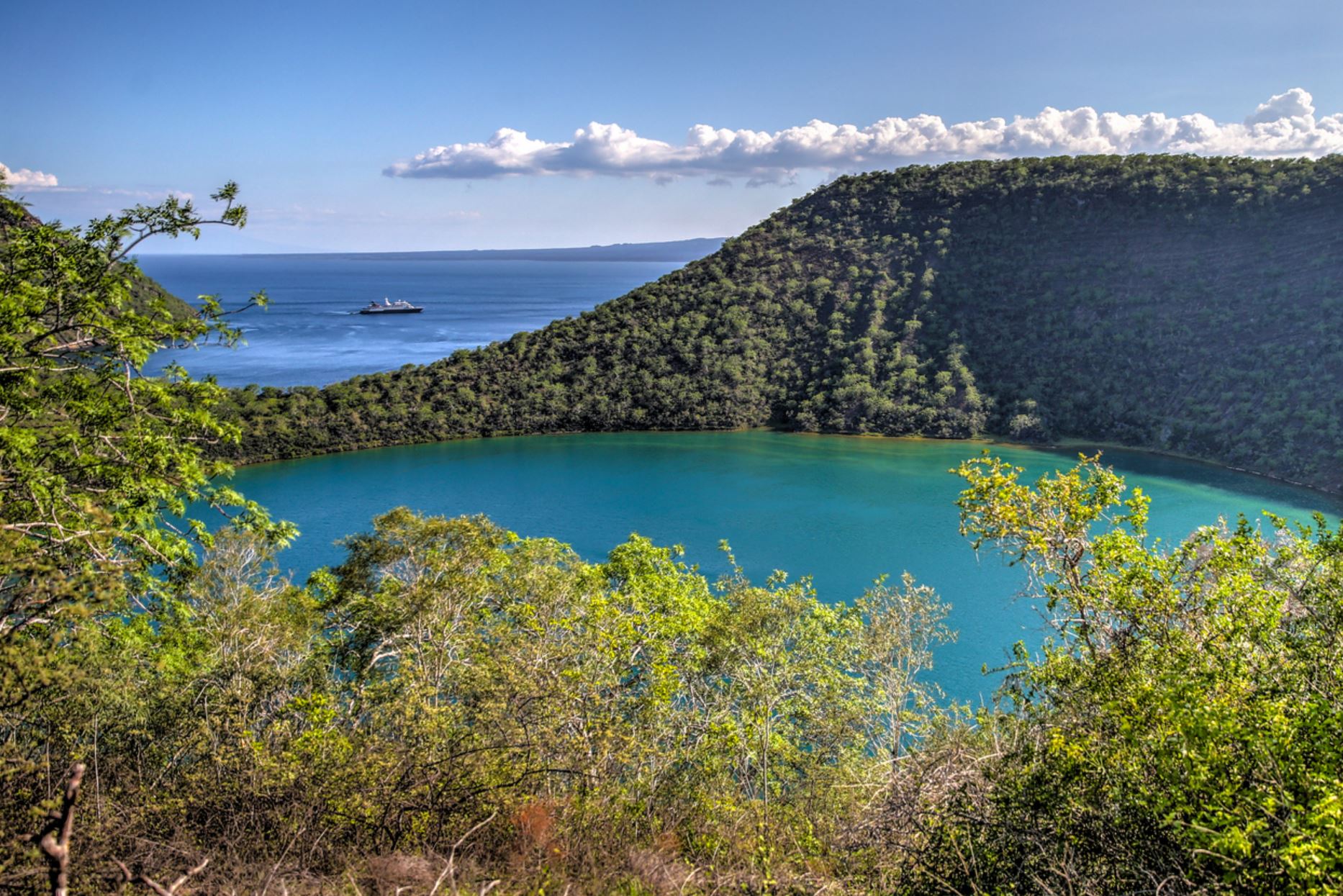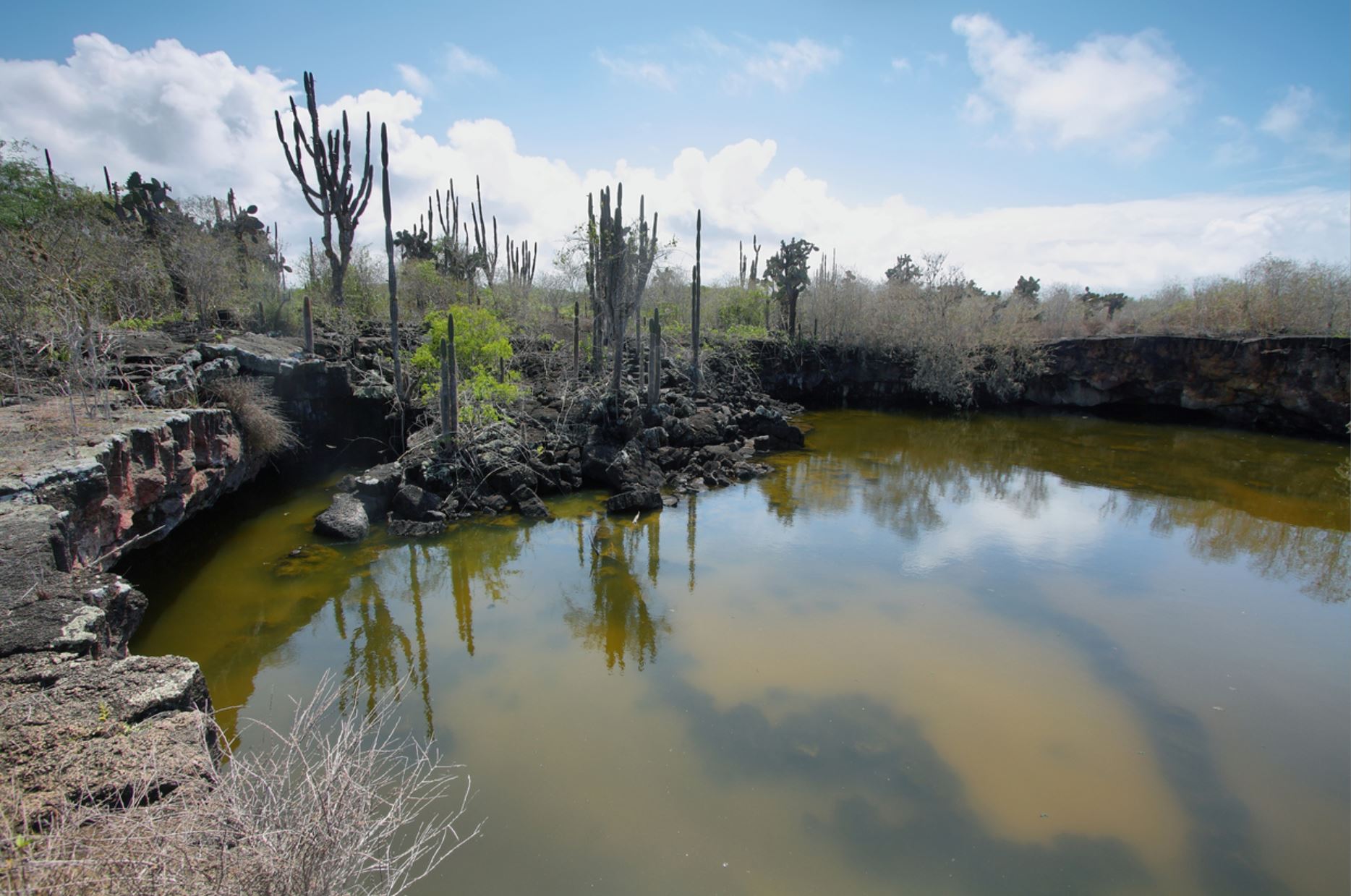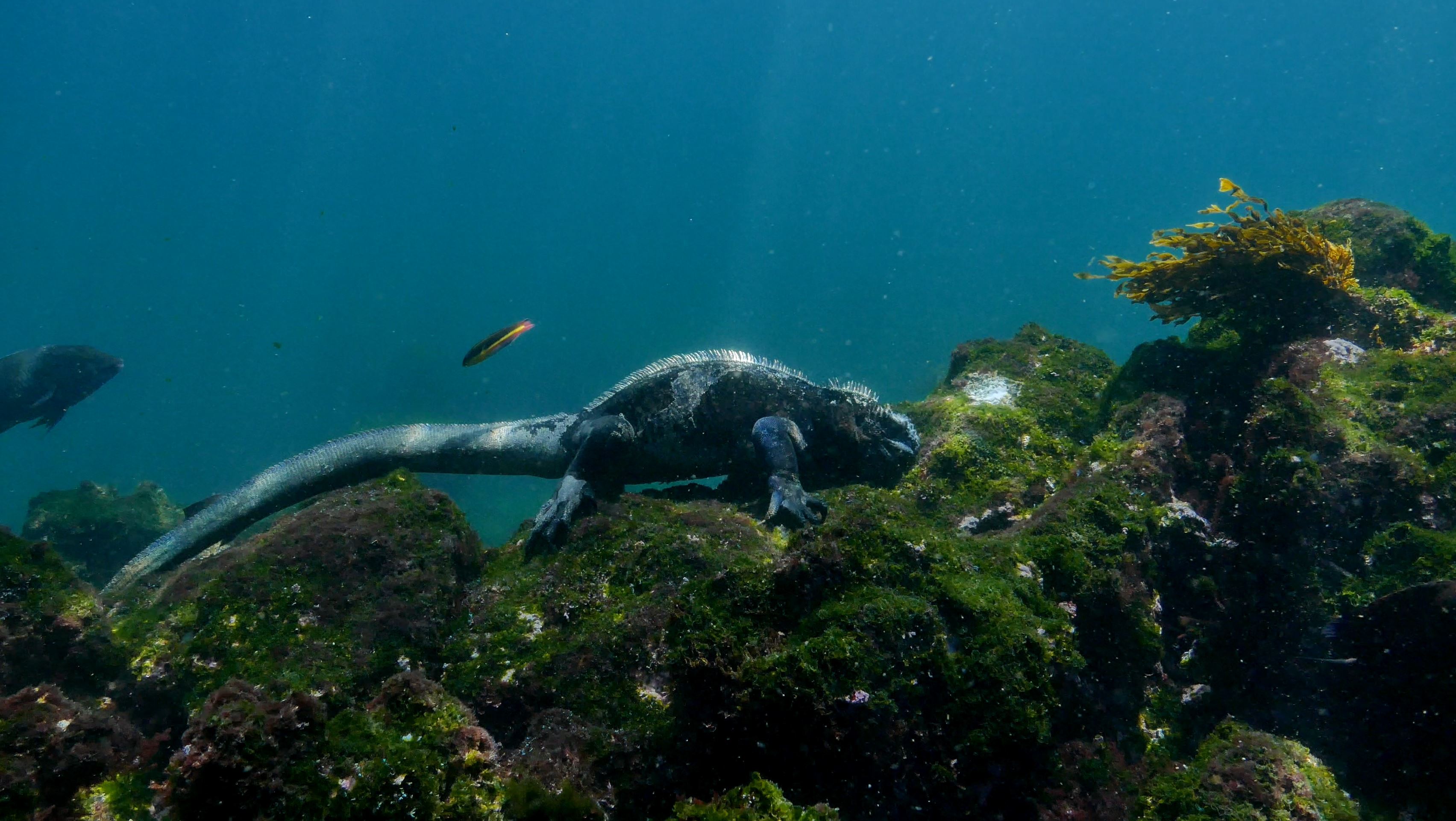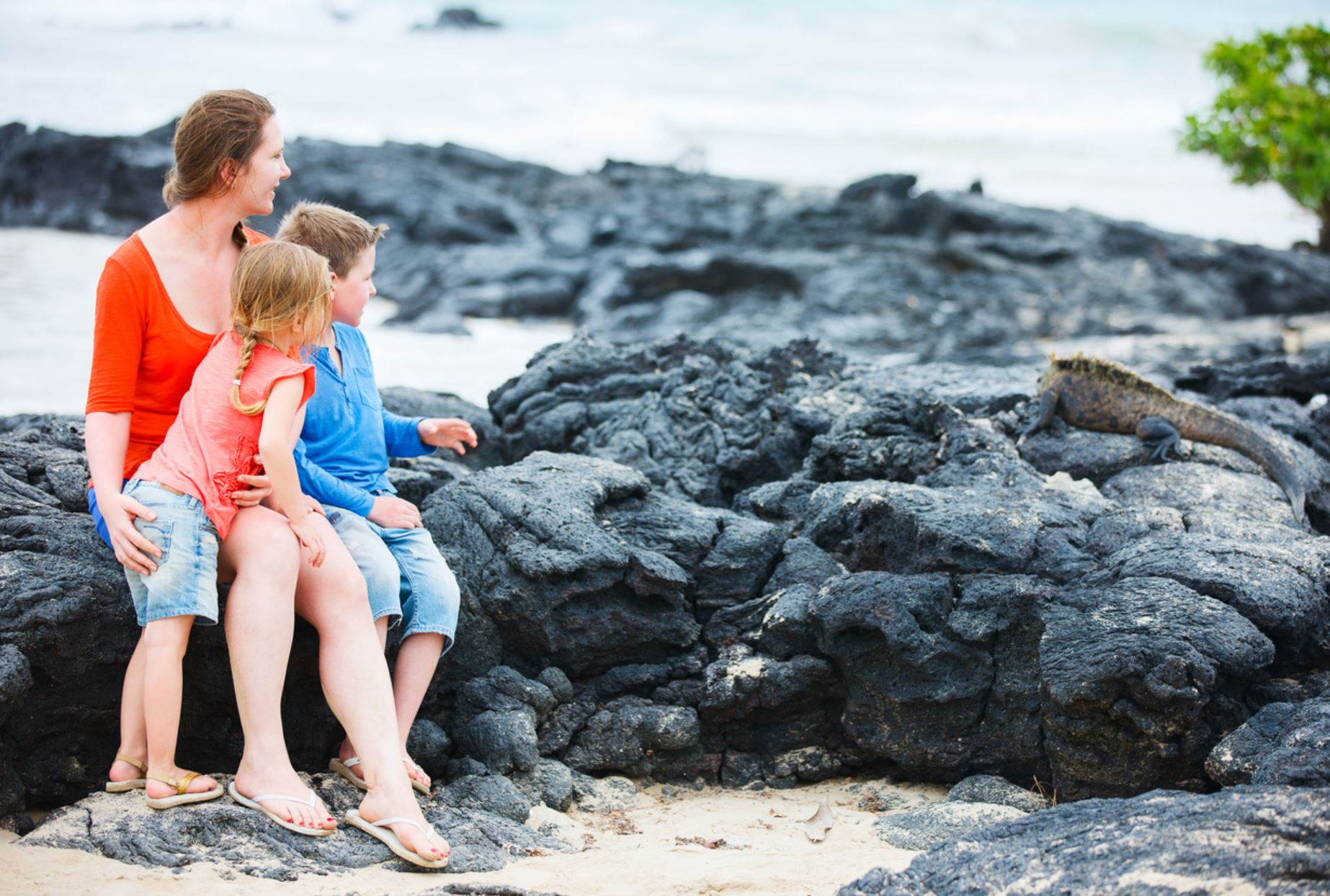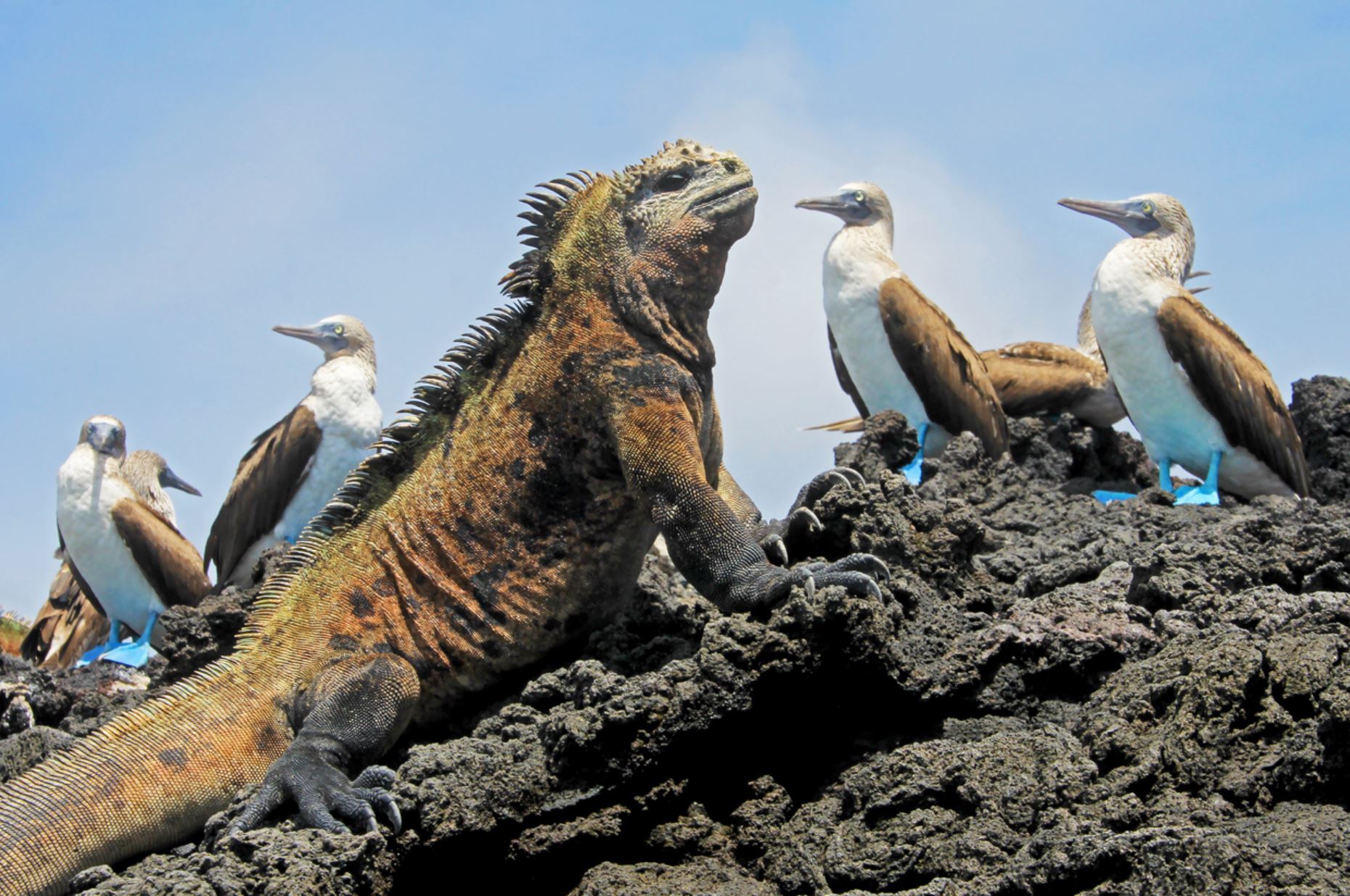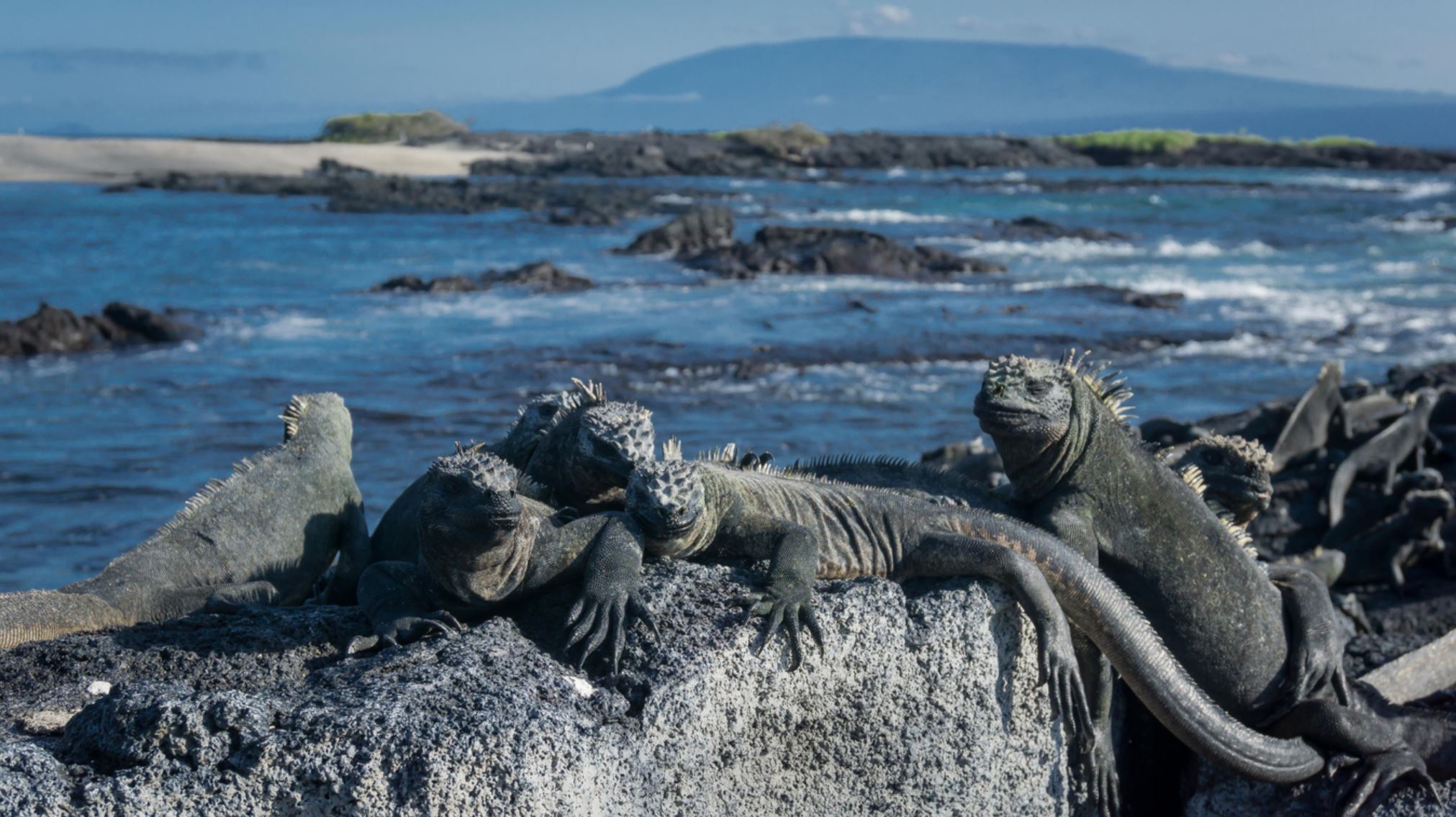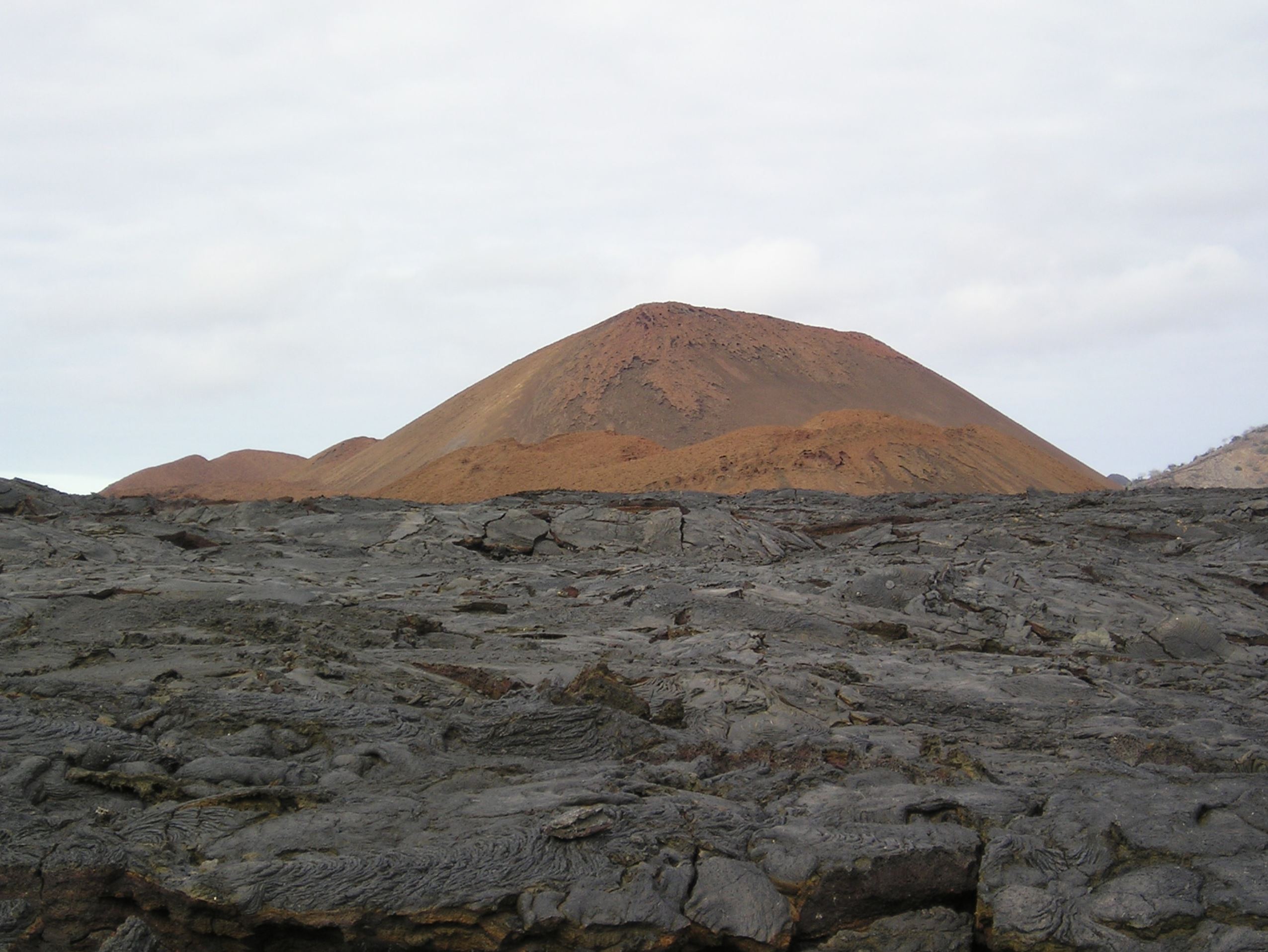Galapagos Whale
Galapagos whales
Approximately 24 different species of whale inhabit the abundant waters of the Galapagos Marine Reserve. It’s likely that more species are present but have yet to be positively identified. Whale watching in the Galapagos is a year-round activity, though the cooler months (July through November) are generally considered the beste time to see whales. Whales are more commonly spotted in the western waters of the archipelago, between Isabela and Fernandina islands in particular. Many species, such as the Sperm and Bryde’s whales, the orca, and common and bottlenose dolphins are present year-round, while others, such as blue and humpback whales, are seasonal visitors.
Cetaceans are divided into two major groups: baleen whales and toothed whales. Baleen whales are generally larger than toothed whales and feed by filtering water through their baleen—a bristly structure in the whale’s mouth made of keratin (the same substance that makes up human hair and fingernails). A baleen whale feeds by opening its mouth and taking in water, which is expelled through the baleen, trapping small animals such as krill and fish. Species of baleen whales found in the Galapagos include blue whale, Bryde’s whale, humpback whale, minke, and sei. Toothed whales, including dolphin, porpoises, and orcas and sperm whales hunt for their food and may feed upon fish and squid (dolphins and porpoises), marine mammals such as sea lions and fur seals (orcas) and giant squid (sperm whales).
BALEEN WHALES
Blue Whale
Blue whales can reach nearly 100 feet in length and weigh close to 200 tons (or about the weight of 35 elephants), making them the largest animal in existence and the heaviest animal to ever have lived. They are regular visitors to the Galapagos and can be identified by their huge tails, which can be up to 25 feet wide, their mottled blue-gray color, and relatively small dorsal fins.
Bryde’s Whale
Bryde’s whales are the most commonly seen baleen whales in the archipelago. They can weigh up to 44 tons and can be identified by their blue-gray backs, pointed, crescent-shaped dorsal fins and narrow spouts—the cloud from which can reach up to 13 feet high.
Humpback Whale
The humpback whale, which can weigh up 45 tons, is perhaps the easiest whale to identify and one of the most fun to watch. Their dark-blue or black bodies are covered in barnacles, and they like to “spy hop” by raising their heads out of the water to look around. They also breach frequently.
Minke Whale
The dolphin-shaped minke whale is the smallest baleen whale, weighing in at 8 to 10 tons. It has a pointed head, sharp snout and white patches on its flippers. The fin and flukes are only visible when it breaches.
Sei Whale
The Sei whale can be identified by its long, slender body, dark, steel-gray skin and tall, pointed dorsal fin. It feeds close to the surface and, unlike many other species, does not arch its back or show its flukes when it blows.
TOOTHED WHALES
Orca
You can’t misidentify this big predator, which has distinctive black-and-white coloration, a powerful stocky body and a tall dorsal fin that can reach up to 6 feet in height. Weighing in at up to 11 tons, orcas hunt dolphins, fur seals, sea lions, penguins and even other whales.
Short-Finned Pilot Whale
This almost all-black whale is sometimes seen cruising in groups of 40 or more individuals. It has a large, bulbous forehead and a long, back-curving dorsal fin and weighs 1 to 3 tons.
Sperm Whale
The sperm whale is the largest of the toothed whales and the world’s largest carnivore, weighing in at up to 45 tons. It has an enormous, square head and steel-gray corrugated skin that is often covered with big circular scars—souvenirs from tangling with its favorite food source, the giant squid. It is rare that visitors to the islands have an opportunity for an up-close encounter with a sperm whale since the whales make frequent, long, deep dives as they feed, but it is not uncommon to see a sperm whale’s spout on the horizon or its giant belly rise to the water’s surface in the distance.
During the 1800s, sperm whales were hunted to the brink of extinction because of the demand for whale oil. The upwelling waters around the islands provide optimal feeding grounds for these marine mammals, and they were killed by the thousands here. However, once people began extracting oil from the earth, sperm whales were spared, but the whaling industry left its mark on the Galapagos Islands.
Animal Group: Marine life
Scientific Name: Balaenoptera musculus (blue whale)
Animal Average Size: 100 feet
Animal Average Weight: 150 - 200 tons
Places where you may see whales in Galapagos: Fernandina, Isabela
Pictures
Islands where you can see the animal with a little luck:
Isabela
The largest island of the archipelago and is easily recognized due to its shape that resembles a seahorse. Well known for having the second biggest active crater of the world in Sierra Negra Volcano (1.490 m), is located on the west of the archipelago and has one of the richest marine ecosystems. Isabela together with Fernandina are still located over the hot spot, causing volcanic activity until today, making them the youngest islands of the archipelago. Wolf Volcano had activity just last year giving visitors the chance to see how the islands grow and turn into what we know today.
It was formed into a big island mass by six volcanoes that in the beginning were six different islands, five of which are still active. Each one of them is populated by a different specie of Tortoise that used to live in a separated island.
Home of Penguins, Flightless Cormorants, Marine and Land Iguanas and many Marine Birds, Isabela also portrays the picture of the evolving process that these species went through in all different locations of the same island. Named Albermale by the English colonizers, it offers not only diverse ecosystems but also some of the most amazing landscapes and natural sights of the archipelago.
Small human population in the south of the islands. This is one of the four populated islands; about 2200 people live in Puerto Villamil. This town is the result of almost 300 years of interesting human interactions related to military plans and prison breakouts, and today is a welcoming site to explore and encounter the settlements that can tell the story.
Punta Vicente Roca visitor site is the best place to find the famous flightless cormorant. The evolution process that this specie went through can be observed on his behavior and environment on this location, providing evidence to understand Darwin’s theory of evolution. Located on the north side, the head of the sea horse is a very important marine productive area, hit by the Cromwell Current, offers the most extraordinary marine life so it is considered one of the best diving spots of the archipelago. Whales and sharks are often seen in our visits.
Bahia Urbina visitor site is located on the central west side of the island and is the only place of the archipelago where tortoises have been born and are still there, in other words, they are a natural, untouched population. All other have suffered migrations or problems with introduced species.
Visitors sites: Albemarle Point, Arnaldo Tupiza Tortoise Breeding Center, Cape Marshall, Concha de Perla, Cowley Islet, Elizabeth Bay, Las Tintoreras, Moreno Point, Puerto Viallmil, Roca Blanca, Sierra Negra Volcano, Tagus Cove, The Wetlands, Urbina Bay, Vicente Rock Point, Wall of Tears
Fernandina
Probably the only island in the world without introduced species. Admire astounding volcanic landscapes at a site often perceived as a ‘land without time’.
The youngest island of all, only 300 thousand years and is still active. Is located on the west side of the archipelago; siting on top of the hot spot. During the Galapagos National Park existence there have been 13 eruptions, the last eruptions ocrurred on the 2005 and 2009 and the 4th of September 2017 (eruption of the Cumbre volcano).
It is an unpopulated island.
Because of the lava flow only mangrove zones and pioneer cacti have survived its geological environment. This specie has created one of the most amazing and attractive miniature forests in the world, a place to evidence adaptation skills to the absence of soil.
The land of Dragons: This island has a big population of Marine Iguanas that survive thanks to its adaptation to feeding on algae. This is one of the best places to evidence the features that back in the day, pushed the Iguanas to evolve into marine animals, here you can visit the blackest and biggest iguanas of all visiting sites. Also a population of Land Iguanas inhabit the active crater of the island.
Flightless Cormorant biggest population to be visited. This island is home for this famous bird that lost his ability to fly because in his environment it wasn’t needed. This bird adapted to food availability being underwater so it developed amazing swimming and diving skills. To visit this colony is to evidence the evolutionary process alive.
Magical light: Its geological nature gives this island a very special light due to its reflection on the minerals and ground, it portrays a polarized picture of reality. It has a very distinct atmosphere from any other location in the archipelago.
Visitor sites:
Cape Douglas, Espinosa Point, Mangle Point
Mr. Frobeen can give you precise information about the ships.
Mr. Frobeen will be happy to advise you by phone at +49 (0)7633 9399360 or via email info@frobeen.de
If you want to book, what are the payment methods?
The reservation is gratis as an option.
If you want to make an fixed booking, there is to pay a deposit of 20%.
The remaining payment is due 4 weeks before departure. In individual cases, such as diving cruises, other rules apply. Information on request.
- Your payments are insured against bankruptcy!

